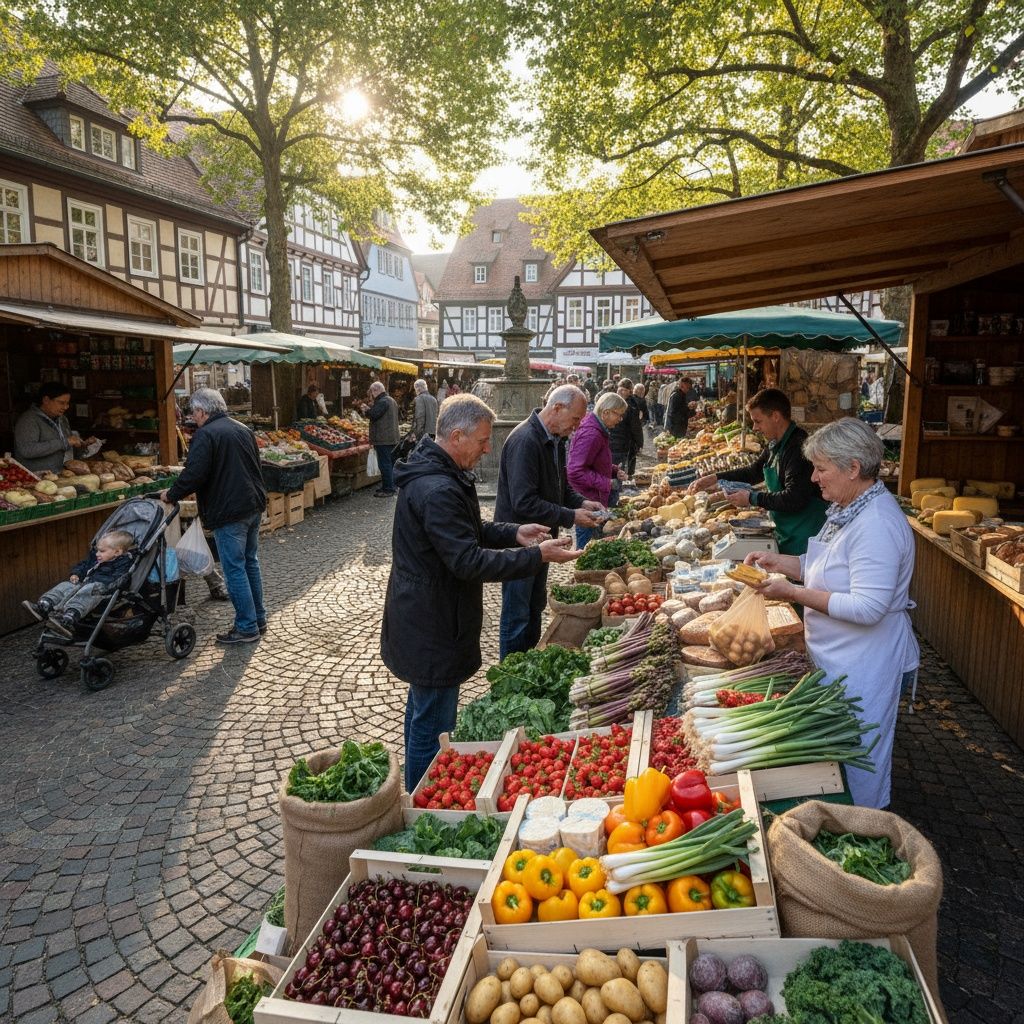Wochenmarkt: Preise und Mengen
Audio (2–3 Fragen): Auf dem Wochenmarkt – Was kauft die Person? Zu welchem Preis?
 Dannis
Dannis
Auf dem Wochenmarkt: frisch, regional, direkt vom Stand. Hier lernst du Sätze für Preise und Mengen.
Wortschatz: das Kilo (kg), der Stand, regional, das Angebot (Sonderpreis), probieren (kosten).

Preise fragen: „Was kostet das Kilo?“ / „Wie viel kostet ein Kilo?“ Beispiel: „Die Erdbeeren kosten 3,50 € pro Kilo.“

Mengen sagen: „Ich nehme 500 Gramm.“ / „Ein halbes Kilo, bitte.“ Tipp: 1.000 g = 1 kg.

Probieren & Angebot: „Darf ich probieren?“ / „Gibt es ein Angebot?“ / „Sind die Tomaten regional?“
Am Stand zahlen: „Macht 5 Euro, bitte.“ – „Stimmt so.“ Plus: „Guten Tag!“ / „Schönen Tag noch!“
Comprehension check:
Welche Frage passt? _____ kostet das Kilo?
Was
Wie viel
Wo
For a direct question with the noun included, use “Was kostet das Kilo?”. “Wie viel kostet ein Kilo?” is also correct, but with the article “ein”.
Think of the common structure: “Was kostet …?”
Du willst 0,5 kg Käse. Was sagst du?
Ich nehme ein halbes Kilo Käse.
Ich nehme eine Kilo Käse.
Ich nehme 500 Liter Käse.
Use “ein halbes Kilo” or “500 Gramm”. “Eine Kilo” is wrong gender, and Käse is not measured in liters.
Half a kilo = „ein halbes Kilo“.
Welche Frage prüft, ob die Ware lokal ist?
Sind die Tomaten regional?
Haben Sie Kartenzahlung?
Darf ich probieren?
“Sind die Tomaten regional?” asks if the produce is local. The other options ask about payment or tasting.
Look for the word meaning “local”.
Related articles
Materials on related topics will help expand your understanding of the topics: